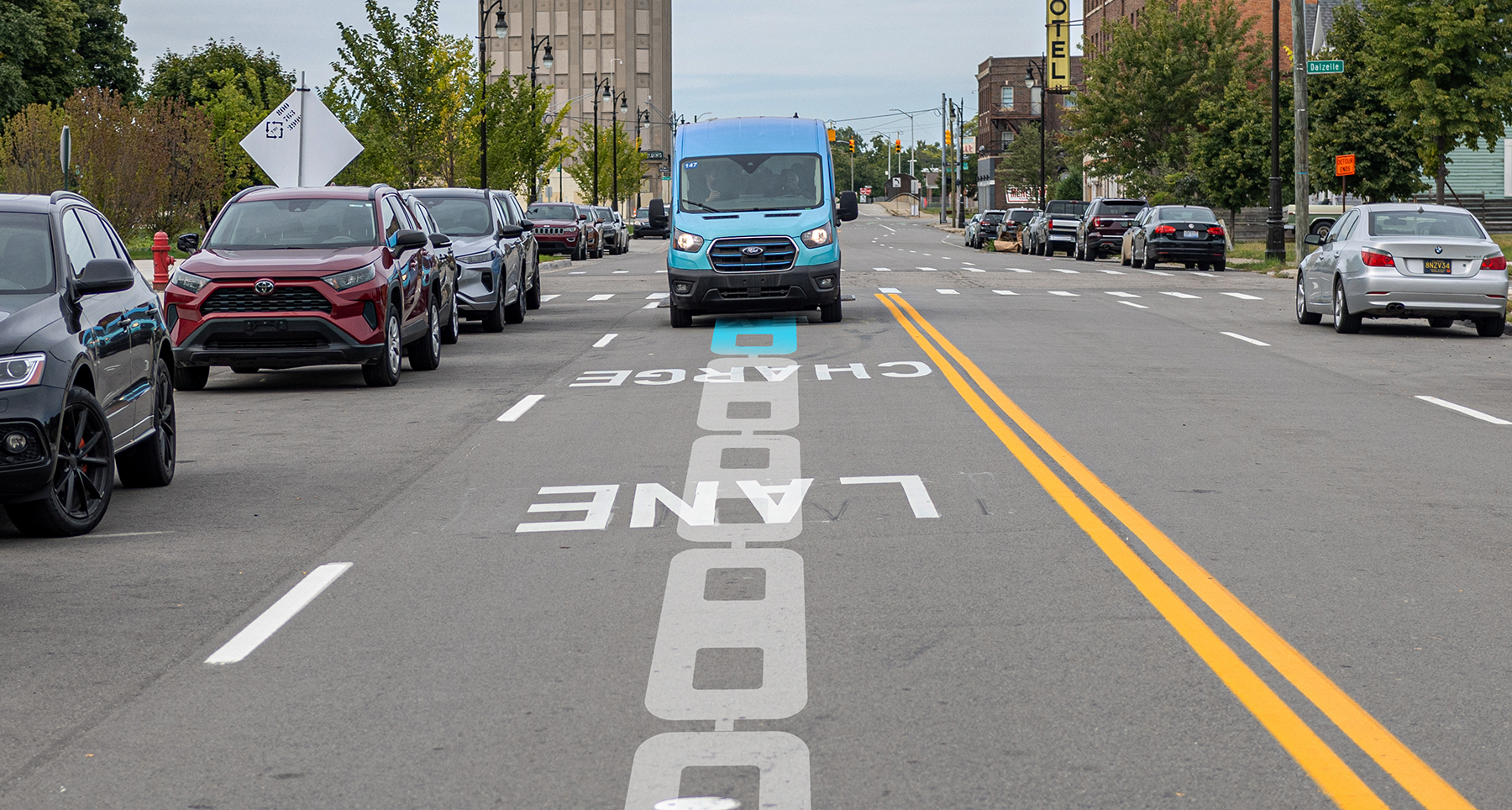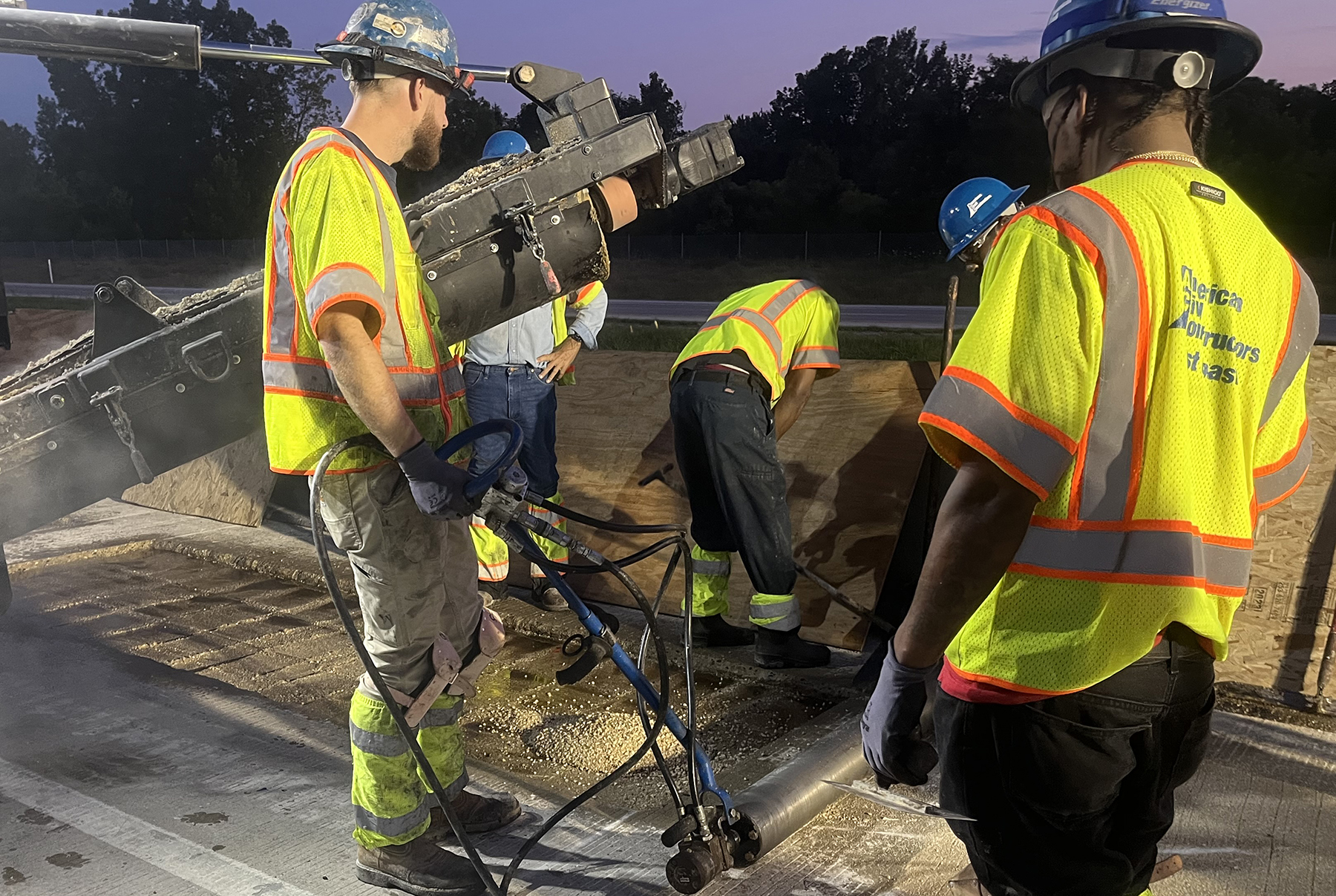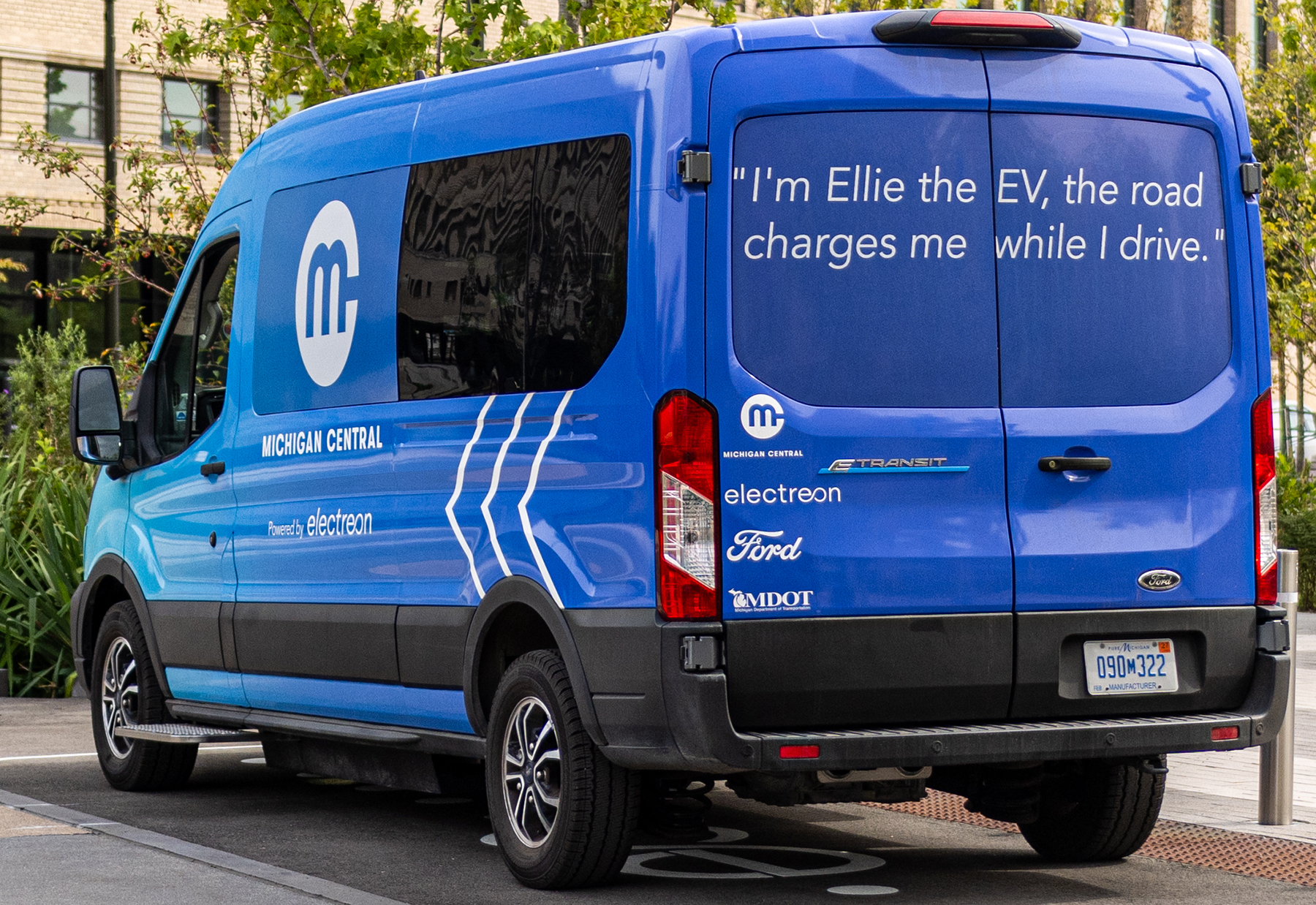
The lack of easily accessed electric vehicle charging systems and the accompanying “range anxiety” that your battery might be depleted before you reach your destination are some of the greatest roadblocks to widespread adoption of EVs. But what if there was a way to recharge your EV that was not only as easy as refueling your gas-powered vehicle, but in fact even easier?
That is the promise of so-called electric roads, which provide the current to power your vehicle and charge its battery as you drive along – with no need to stop and pull off for an uncertain length of time to recharge. Various approaches have been tested in the U.S. and around the world, ranging from overhead wire charging for trucks and buses using pantograph technology to systems that work with passenger cars as well as larger vehicles.
Further reading:
- Engineers are essential to help transit agencies electrify fleets
- Electric vehicle sales shift to fast lane
- In transition to zero-emission buses, California shows how to clear hurdles
These include systems that feature a direct connection between the EV and the electrified road as well as inductive, wireless systems embedded in the roadway itself. These inductive in-road systems can be static – meaning the vehicle is charged as it sits atop the system – or dynamic, meaning the vehicle is charged while in motion.

But EV owners shouldn’t expect to be driving along lengthy stretches of electric roads anytime soon. The technology is mostly still being tested on short segments of roadways, some just a quarter mile in length. Even France, which has some of the most ambitious plans for electric roads, projects that only about 9,000 kilometers of its road network – which measures more than 1 million kilometers in length – might be electrified by 2035, according to the website of Electreon, an Israeli firm that develops wireless charging systems worldwide.
Dynamic charging
In Sweden, a 2-kilometer section of electric road – considered the first in the world – opened in 2018, featuring electric rails embedded in a public road and EVs fitted with a movable arm to make contact with the power source. The design was “not dissimilar” to that of toy slot cars, according to an April 12, 2018, article in the United Kingdom’s Guardian newspaper.
In the United States, research on electric roads has been underway since at least 2010, when Utah State University experimented with inductively charging buses via a dynamic, wireless system. By 2015, Utah State had launched an electrified test track, a solar-powered section of road that featured power transfer coils embedded in the driving surface. Thanks to funding from the National Science Foundation, Utah State is now home to an engineering research center known as ASPIRE, which stands for Advancing Sustainability through Powered Infrastructure for Roadway Electrification.
ASPIRE operates through strategic partnerships with several national laboratories, various companies and organizations involved in transportation or electric utilities, and multiple universities. In 2022, for example, ASPIRE and Electreon demonstrated dynamic wireless charging of a heavy-duty electric truck with a lithium-ion battery on a short segment of Utah State’s test track.
Motor City measures
Electreon is also working with the Michigan Department of Transportation on two electric road projects. The first features a quarter-mile-long section of 14th Street in downtown Detroit, near the recently renovated Michigan Central Station building and the city’s historic Corktown neighborhood. That project features both a dynamic inductive charging system along 14th Street and a nearby static charging area.
The second project involves a three-fourths-mile-long segment of Michigan Avenue in Corktown that will see an inductive charging system installed during a road reconstruction project in 2026 or 2027, says Michele Mueller, an MDOT civil engineer and the agency’s manager of connected and automated vehicles and electrification.
The 14th Street pilot project was designed and installed with assistance from the city of Detroit, global engineering firm Jacobs, Ford Motor Co., clean energy firm NextEnergy, and local electric utility DTE Energy. It features two lanes of inductive charging coils on a four-lane roadway that remains in operation – which makes 14th Street “the first and only” inductive charging effort on a public road in the United States, explains Mueller.

The copper coils were installed in the two inside lanes along 14th Street so that the test vehicle – a Ford EV transit shuttle equipped with an Electreon receiver – could drive back and forth on the route. Operating since late 2023, the project is following “a robust test plan that runs through different scenarios and weather conditions,” Mueller said. This enables the project to collect data on how the system operates in hot or cold conditions, when it is icy or foggy, and under other potential impediments.
“We’re looking at how much power is coming off the grid, how much energy … we lose from the grid to the cabinets (the power management units for the coils), or how much energy might be lost between the coils and the receiver,” Mueller said.
The optimal speed for charging is also being tested, as is any variation in charging when the test vehicle stops and starts moving again and other factors. For example, a series of marks on one of the charging lanes indicates the position of the coils, while the other lane is unmarked. This helps the project test “whether or not you have to be aligned right above the coils” to receive the best charge, Mueller said.
Although the current tests involve only Electreon technology, the goal is to develop a system that is interoperable – so that “any EV can drive over it and interact with the coils, regardless of manufacturer,” Mueller said. She adds that because the coils do not transmit energy until the receiver passes over them, the system is safe for pedestrians and cyclists to walk or ride on.
MDOT is also working with asphalt paving firms to determine if performing maintenance on asphalt surfaces will affect the coils. Although there is much more data to collect and analyze before any definite conclusions can be drawn from the tests, Mueller does say that the system currently is “performing better than we expected.”
Indiana aspirations
In another ongoing project, Purdue University, which is part of ASPIRE, is working with the Indiana Department of Transportation on an upcoming in-road charging system that is expected to become operational this spring. The project features a quarter-mile segment of U.S. Highway 231/U.S. Highway 52 in West Lafayette, Indiana, in which a series of charging coils embedded in the concrete road surface will be used to transfer power to a test vehicle equipped with a special receiver. That vehicle will, at different times, be either a heavy-duty electric truck (without a trailer) driven over the charging coils or a test trailer that will be pulled across the charging system by another vehicle, says John Haddock, Ph.D., M.ASCE, a professor of civil engineering at Purdue. The heavy-duty truck, manufactured and operated by Cummins Inc., will test the charging system at highway speeds while the test trailer’s receiver will collect data on the quality of the power transfer and other information, Haddock says.
Each concrete slab along the test route measures 15 feet long while the embedded coils measure roughly 12 feet long, explains Dionysios Aliprantis, Ph.D., a professor of electrical and computer engineering at Purdue. The system is designed to fully power a heavy-duty electric vehicle as it drives at 65 mph so as to maintain the battery’s existing level of charge. Thus, “the state of your battery charge will remain the same when you enter the (test) roadway and exit the roadway,” Aliprantis says.
Purdue is testing heavy-duty trucks rather than passenger EVs because the range of large electric trucks is more limited than it is for smaller vehicles due to the size and weight of their batteries. “If electric trucks could charge using highways, their batteries could be reduced in size, allowing them to carry more freight, significantly reducing costs, and potentially, increasing profits,” according to an INDOT webpage on the Purdue project.
Purdue also hopes to study the impact of large electric vehicles on pavements in highly impacted travel corridors, says Nadia Gkritza, Ph.D., F.ASCE, who is a professor of civil and construction engineering at Purdue and the campus director for ASPIRE. The research should also help make the charging technology more financially viable, Gkritza adds.
There are 85 charging coils along the test route, each powered by a separate power supply unit connected to a generator, says Aliprantis. In the future, multiple coils are likely to be connected to the same power supply unit to reduce costs, and the entire system could be connected to the local power grid, he says.
The 85 coils along the quarter-mile test bed represent the “sweet spot” between a small laboratory prototype and a system that could become unmanageably large for these initial tests, says Aaron Brovont, Ph.D., a research assistant professor in electrical and computer engineering at Purdue. To prepare the roadway for the project, work crews milled channels to accommodate the coils, bored horizontal and vertical spaces for conduits to run transmitter leads to the road shoulder, buried vaults for inverter systems, and poured a polystyrene concrete overlay in key locations.
During the tests, drones will help the engineers monitor activity below the road’s surface, says Gkritza. For example, thermal data will help researchers analyze “where and how the road heats up when the coils are energized, helping to identify areas of the pavement that may be prone to overheating,” she explained. The thermal imagery will also help “detect hot spots and precisely determine their locations, ensuring both the operational safety and the efficient maintenance of the road.”
Unstoppable driving?
Other electric road projects are also in the works in Europe, Asia, the Middle East, and from coast to coast within the United States – a three-fourths-mile-long section of State Route 516 in Florida is expected to be electrified by 2027, while in California, UCLA is testing a combination of in-road inductive charging and static charging systems for campus buses that should be in operation by 2028.

But it is unlikely that all roads will ever become electric roads, nor will electric roads entirely replace traditional EV charging systems, says Gkritza. Instead, wireless charging roads are meant to complement traditional chargers, especially on routes without many charging stations or in situations where an EV like a transit bus or delivery vehicle might have difficulty making it from one charger to the next.
Likewise, if a heavy truck had to pick up a load at the airport in Indianapolis and deliver that load to a destination in Columbus, Ohio, by driving along I-70, probably only the interstate portion of the trip would involve an electric road, says Steve Pekarek, Ph.D., a professor of electrical and computer engineering at Purdue. The truck’s battery would be sufficient to get it from the airport onto the electrified interstate and then from the interstate exit to its final destination.
Energy consumption on electric roads would be monitored and the users charged, perhaps with technology similar to E-ZPass sensors or other similar systems, notes Brovont. For many, such costs would be the proverbial small price to pay for the freedom of essentially unlimited travel. “The grand vision of this system is for a driver to get on the road in New York and get off in Los Angeles and not have to stop to charge,” Brovont explained. “Because if you can maintain your state of charge once you get on an electrified road or highway system, your range is indefinite! You don’t have to plan your trip around charging your vehicle.”



